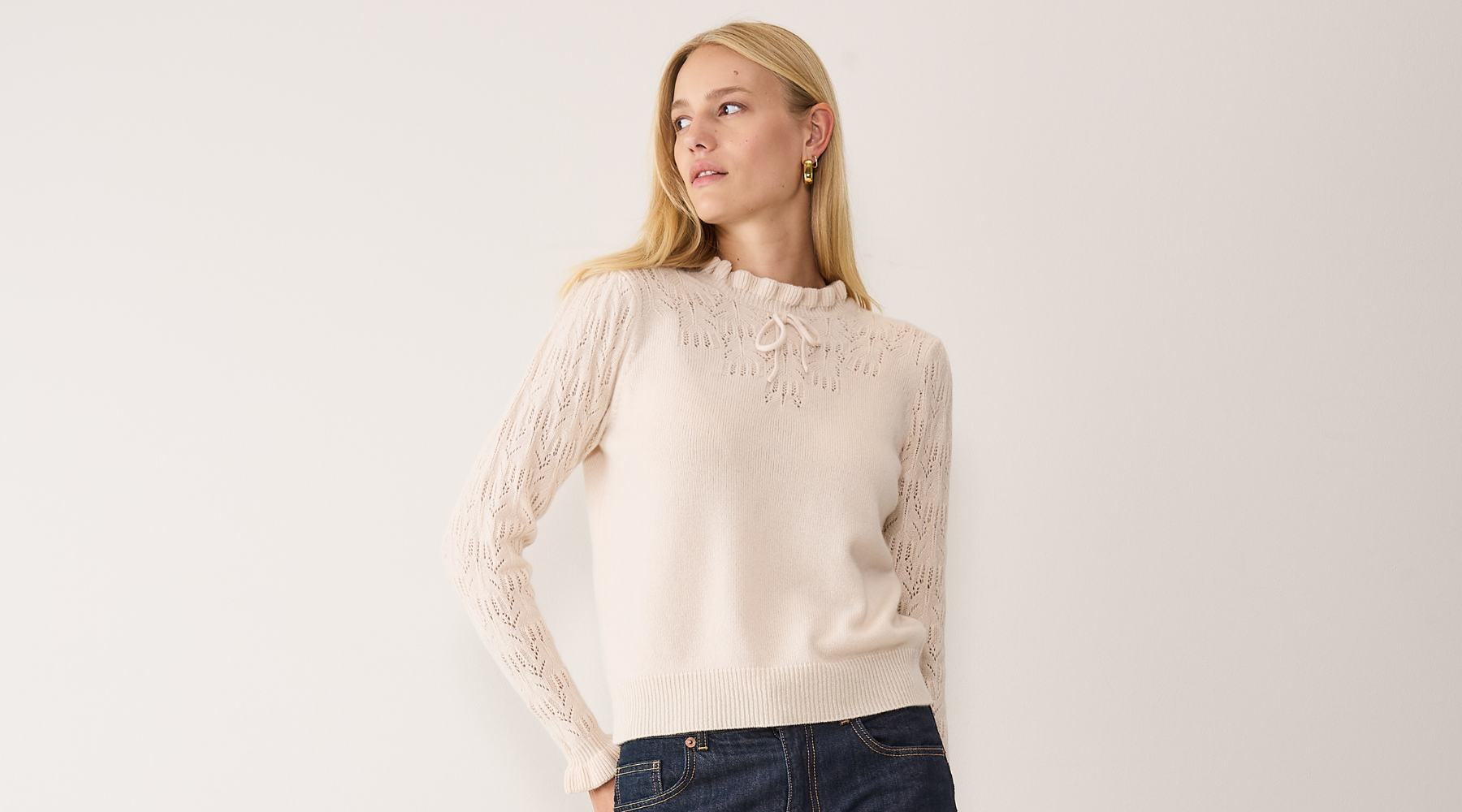
What's The Difference Between Cashmere, Merino, Mohair, and Wool?
Cashmere vs. Merino Wool: A Guide to Luxurious Warmth and Style
When it comes to luxury knitwear, two fabrics often come to mind: cashmere and merino wool. Both are natural, soft, and celebrated for their insulating properties, but they cater to different preferences when it comes to feel, durability, and price. Whether you're building a sustainable wardrobe or simply indulging in the finer things, understanding these differences can help you make an informed decision about your next cosy, elegant piece.
What is Merino Wool and Where Does It Come From?
Merino wool is a premium natural fibre sourced from the Merino sheep, known for its fine, soft wool. Unlike regular sheep’s wool, merino wool is much finer, giving it a smoother and more luxurious feel. These special sheep are primarily raised in countries like New Zealand, Australia, Argentina, Chile, Uruguay, and South Africa, where they thrive in diverse climates.
Merino wool is prized for its breathability, moisture-wicking properties, and softness, making it a favourite for lightweight layering pieces that don’t sacrifice warmth. It’s also naturally wrinkle-resistant and has antibacterial properties, which means garments made from it tend to stay fresher for longer between washes—a wonderful bonus for eco-conscious consumers looking to reduce water waste.

Cashmere vs. Merino Wool: Key Comparisons
When deciding between cashmere and merino wool, it’s essential to understand their unique characteristics across several factors:
Softness: While both fibres are soft and smooth, cashmere has a silkier feel against the skin. Merino wool is soft but can be slightly coarser by comparison. Cashmere’s ultra-fine fibres give it a cloud-like softness that’s unmatched, making it ideal for those who prioritize luxurious comfort.
Warmth: Although both merino wool and cashmere provide excellent insulation, cashmere is up to eight times warmer than merino wool. Cashmere’s fine fibres trap more air, offering unparalleled warmth without added bulk. It’s perfect for layering on crisp fall days or wearing alone in the winter while staying both stylish and cozy.
Durability: Merino wool is more durable and robust, making it suitable for activewear or pieces you’ll wear frequently. It can handle regular wear and tear, whereas cashmere, though durable when properly cared for, is more delicate and needs a bit more attention to maintain its softness and shape.
Care: Merino wool is generally easier to care for and can often be machine washed on a gentle cycle. Cashmere, on the other hand, requires more delicate handling—usually hand washing or dry cleaning—to keep it looking its best over time.
Price: Cashmere is more expensive than merino wool, and for good reason. It comes from the soft undercoat of the cashmere goat, which is only collected once a year through a meticulous combing process. To make just one of our cashmere sweaters, it takes the wool from four goats, highlighting both its rarity and exclusivity. In contrast, merino sheep produce more wool annually, making merino wool more affordable.
Cashmere vs. Mohair: Two Luxurious Fibers, One Clear Winner
If you love the softness and warmth of cashmere, you may wonder how it compares to mohair, another premium fibre known for its sheen and insulation. Both cashmere and mohair offer high levels of comfort, but there are distinct differences between the two.
What is Mohair and Where Does It Come From?
Mohair comes from the long, lustrous coat of the Angora goat, not to be confused with angora wool, which is derived from rabbits. Angora goats originated in the region of Ankara, Turkey, but today, the top producers are South Africa and the United States, particularly Texas.
Mohair is praised for its high lustre and sheen, which gives garments a radiant glow when exposed to light. It's also naturally insulating, making it an excellent option for winter wear.
Cashmere vs. Mohair: Key Comparisons
Texture: While both fibres are soft, mohair tends to have a coarser, hairier texture compared to the smoothness of cashmere. This unique texture can make mohair pieces appear more voluminous and eye-catching, but they can sometimes feel heavier or even itchy to wear.
Softness: Cashmere reigns supreme in the softness department. Its fine, downy fibres create a buttery smooth texture that feels heavenly on the skin. Mohair, on the other hand, is slightly thicker and less silky to the touch, though still considered a luxurious material.
Durability: Cashmere is more delicate than mohair but, when properly cared for, can last a lifetime while maintaining its softness and elegance. Mohair is sturdy and holds up well to regular use but may lose its softness over time due to its coarser texture.
Warmth: Both fibres will keep you warm, but cashmere’s insulating properties are more advanced. It provides incredible warmth without the weight, while mohair garments tend to feel bulkier.
Cashmere vs. Wool: The Ultimate Cosy Comparison
For those who value warmth and sustainability, sheep's wool is a classic, eco-friendly fibre used in garments for centuries. However, cashmere offers something uniquely special.
What is Wool and Where Does It Come From?
Wool is a natural fibre harvested from sheep all around the world, with Australia and China being the largest producers. Wool is widely accessible, renewable, and biodegradable, making it a sustainable option for conscious consumers.
Aude
Cashmere vs. Wool: Key Comparisons
Warmth: While wool is great for insulation, cashmere is far superior when it comes to trapping heat, making it an excellent option for keeping warm without bulky layers.
Softness: Cashmere is far softer and smoother than standard sheep’s wool, which can feel rough or itchy to some wearers. Over time, cashmere actually becomes softer with each wear, creating a piece that feels even more luxurious as it ages.
Care: Wool can often be machine washed without too much fuss, but cashmere requires a gentler touch—hand washing in cold water or dry cleaning will help extend its life.
Why Choose Cashmere?
Ultimately, the choice between cashmere, merino wool, mohair, and wool comes down to personal preference, lifestyle, and budget. For those who crave unparalleled softness, warmth, and timeless elegance, cashmere remains the top choice. Yes, it requires a bit more care and investment, but the payoff is worth it—a piece of cashmere can last for decades, and its softness only increases with time.

Investing in a cashmere piece is an investment in yourself—a statement of refined taste, a commitment to quality, and an embrace of timeless luxury. Browse our collection of sustainably crafted cashmere pieces and discover the perfect addition to your wardrobe—because you deserve nothing less than the finest.


